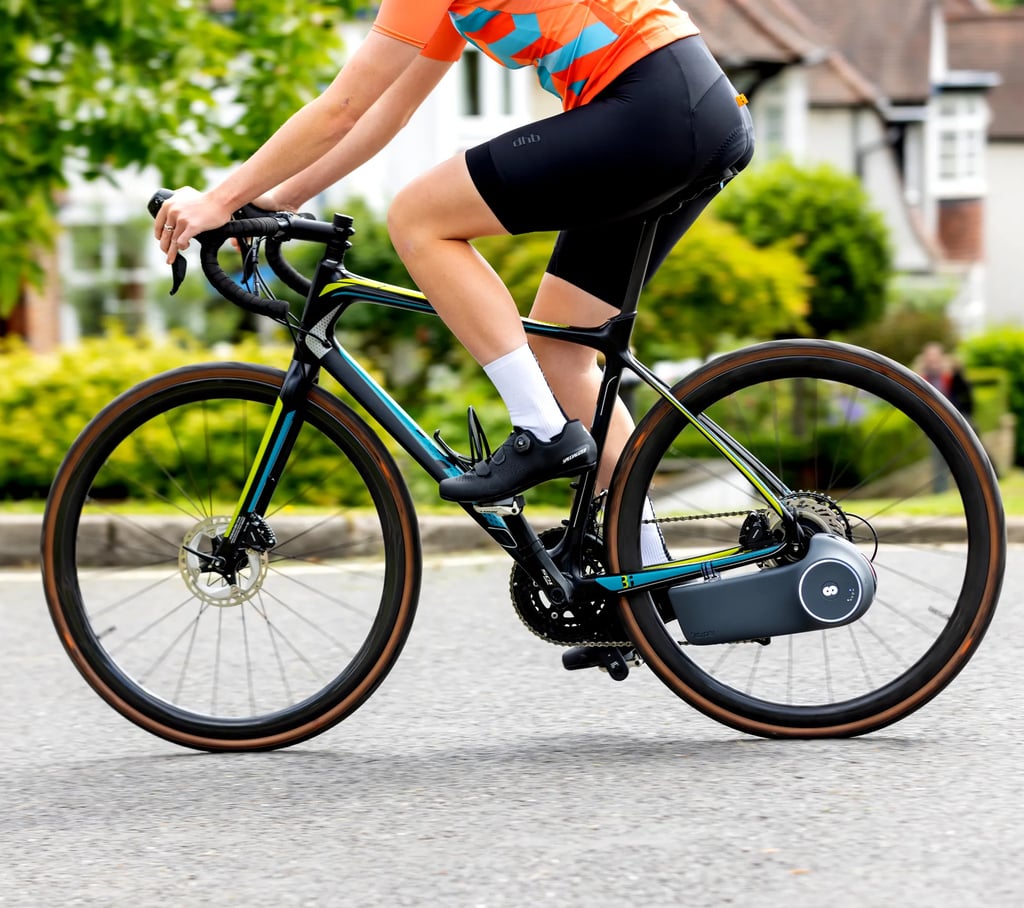Skarper: A Contemporary Echo of the Original Cyclemotor - Redefining the Essence of Pedal-Assisted Evolution
The article discusses the Skarper, a clip-on motor and battery pack for bikes with disc brakes. It explores how the Skarper aims to redefine the essence of pedal-assisted evolution by offering a discreet and affordable alternative to complete e-bikes. The article highlights the Skarper's features, such as its symbiotic dance with the bike's internal gearing and its ability to provide 37 miles of assisted cycling. It also delves into the question of cost and the value proposition of the Skarper compared to other e-bikes on the market. Ultimately, the Skarper is presented as a quiet revolution in the world of electric bikes, offering an invitation to embrace the uncharted realms of assisted pedaling.
MOTORIZED BICYCLES CYCLEMOTORSUNITED KINGDOM 2020'SELECTRIC
11/14/20232 min read


Skarper: A Contemporary Echo of the Original Cyclemotor - Redefining the Essence of Pedal-Assisted Evolution
In the ever-turning wheels of time, where revolutions seem commonplace, the emergence of electric bikes hardly raises an eyebrow. A distant kin to the inventions of Bolton and Libbey, the fundamental propulsion methods remain tethered to tradition, even as the electric bike industry burgeons into a $41 billion behemoth, poised to ascend to $120 billion by 2030. In the labyrinthine alleys of north London, Alastair Darwood, a pedal philosopher in his own right, crafts a tale of existential innovation—a clip-on motor and battery pack christened Skarper that whispers promises of metamorphosis to any bike with disc brakes.
The Skarper, a modern-day alchemist's creation, demands a solemn exchange. In lieu of your bike's rear disc-brake rotor, it bestows the DiskDrive—a semblance of tradition cloaked in innovation. The 3-kilogram unit, a guardian of the battery and a 250-watt-hour motor, clips onto the frame, forging a pact with the bicycle's essence. The symbiotic dance begins as the DiskDrive rotor engages with the internal gearing, the motor's cadence mirroring the rider's existential journey.
The Skarper, like a Sisyphean companion, offers 37 miles of assisted cycling, a rhythmic ballet at or just below legal speeds. A silent pact with the road, an ephemeral waltz between the rider and the machine. A small sensor, the silent observer, clips to the bike's crank, measuring the pulse of speed and cadence, echoing the heartbeat of purpose.
Yet, in this ballet of gears and rotors, one must confront the question of cost—a Faustian bargain, perhaps. A thousand pounds for the whispered promise of assisted pedaling. The market echoes with dissent, with complete e-bikes parading at a lower price. Darwood, the modern-day Socrates, contends, "There's a real value fallacy in buying a £1,000 ebike." A dissection of cost, a challenge to the prevailing norms. A call to traverse the cobbled streets of discernment.
The Skarper, an existential paradox, seeks not to replace but to augment. An invitation to dance with the familiar, a waltz with the bike one already owns. It shuns the flamboyance of an entire e-bike, opting for a discreet union—a motor that clips on and off, a clandestine affair with the essence of simplicity.
In the crucible of existential musings, the Skarper transcends mere innovation. It aspires to be an industry-standard choice, a DiskDrive rotor adorning the bikes of the cycling establishment. A universal canvas for third-party innovation, an enigmatic force heralding the arrival of different-powered propulsion units. A brushstroke on the canvas of urban mobility, painting a portrait of shared electric dreams.
As one saddles the Skarper, one can't help but ponder the intangible joys—the instantaneous pull, the unobtrusive assistance, the dance with hills and stop lights. An alchemical concoction that defies the tyranny of weight, offering the blissful illusion of unbridled freedom.
In the tapestry of electric metamorphosis, the Skarper is a nuanced stroke, a chiaroscuro of bearings and pinion gears, of whispers and rattles. A prototype yearning for refinement, resonating with the existential truth that perfection is but a fleeting illusion.
As the Skarper navigates the cobblestone streets of the cycling consciousness, one can't escape the allure of its silent revolution—a revolution that beckons one to question, to challenge, and to embrace the uncharted realms of assisted pedaling. In the age of revolutions, the Skarper emerges not as a thunderous proclamation but as a quiet whisper, an electric soliloquy in the symphony of cycling's evolution.
